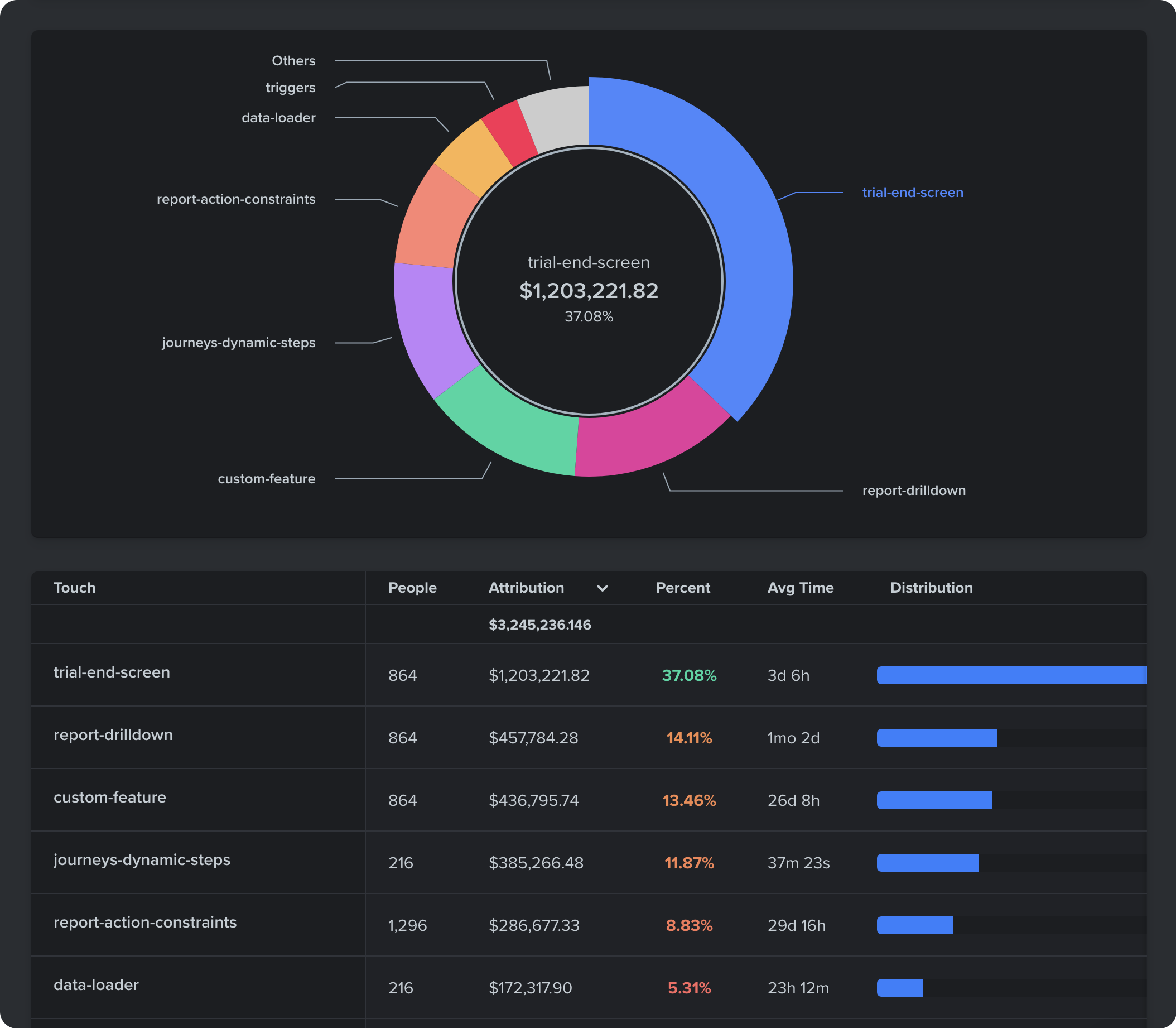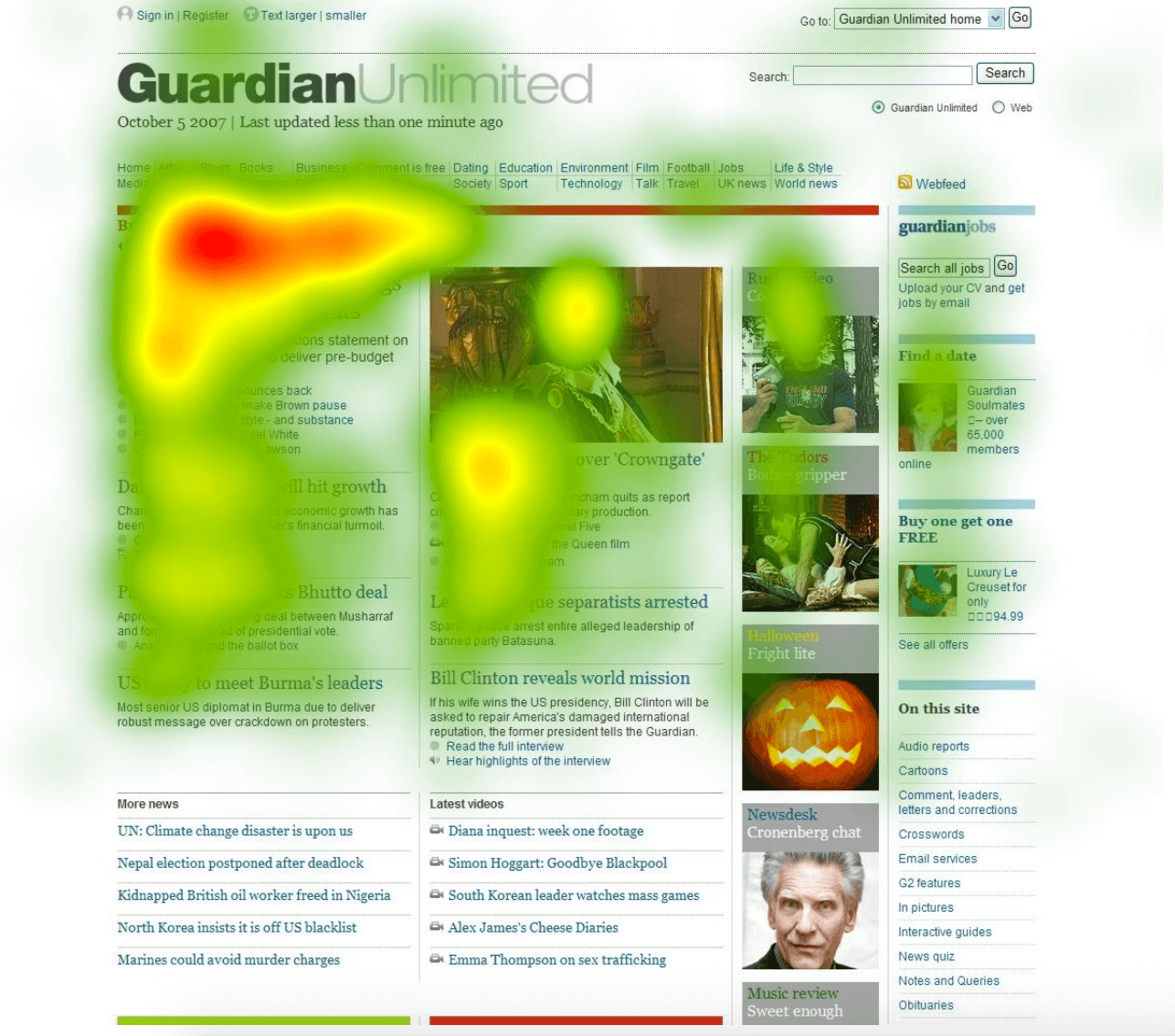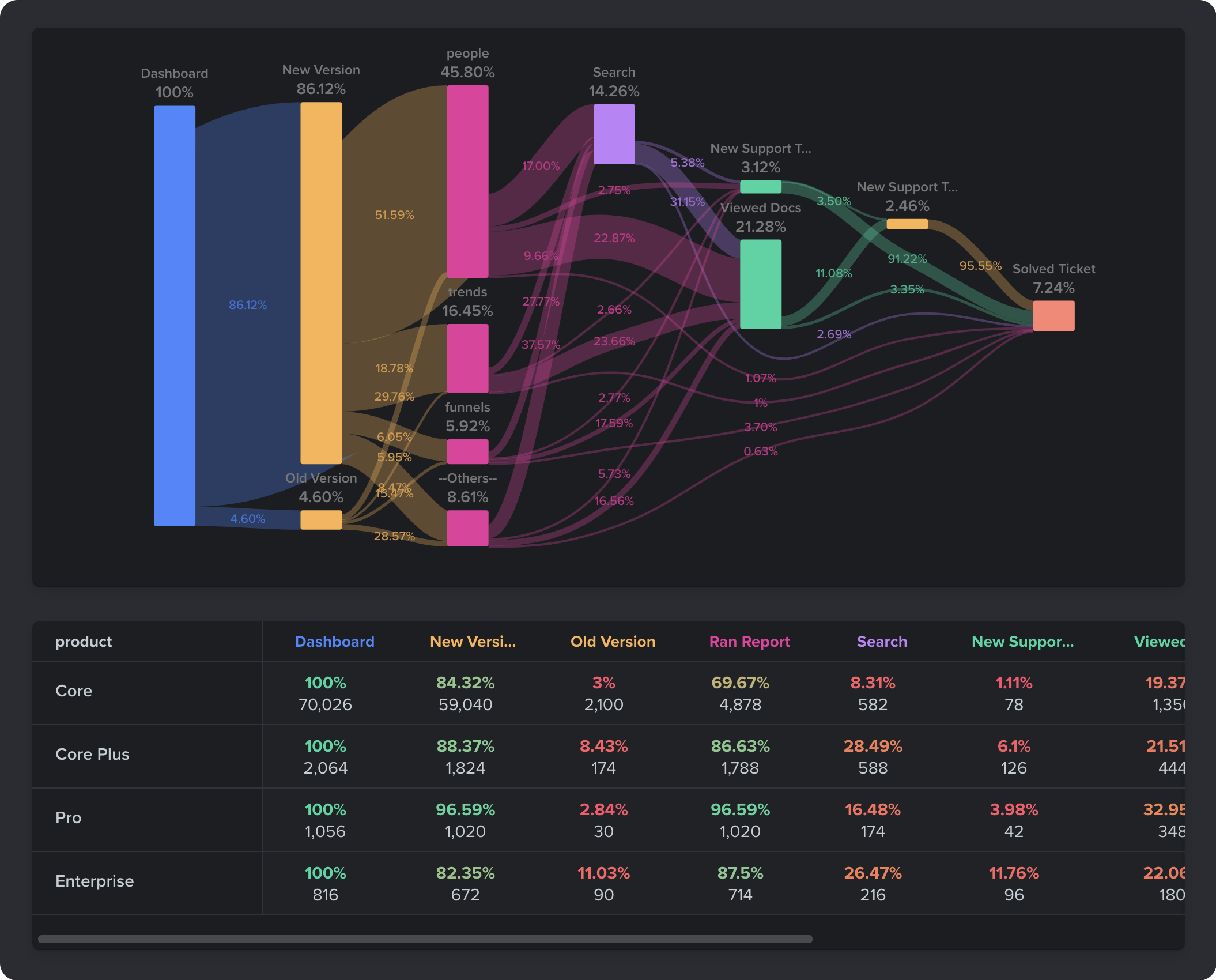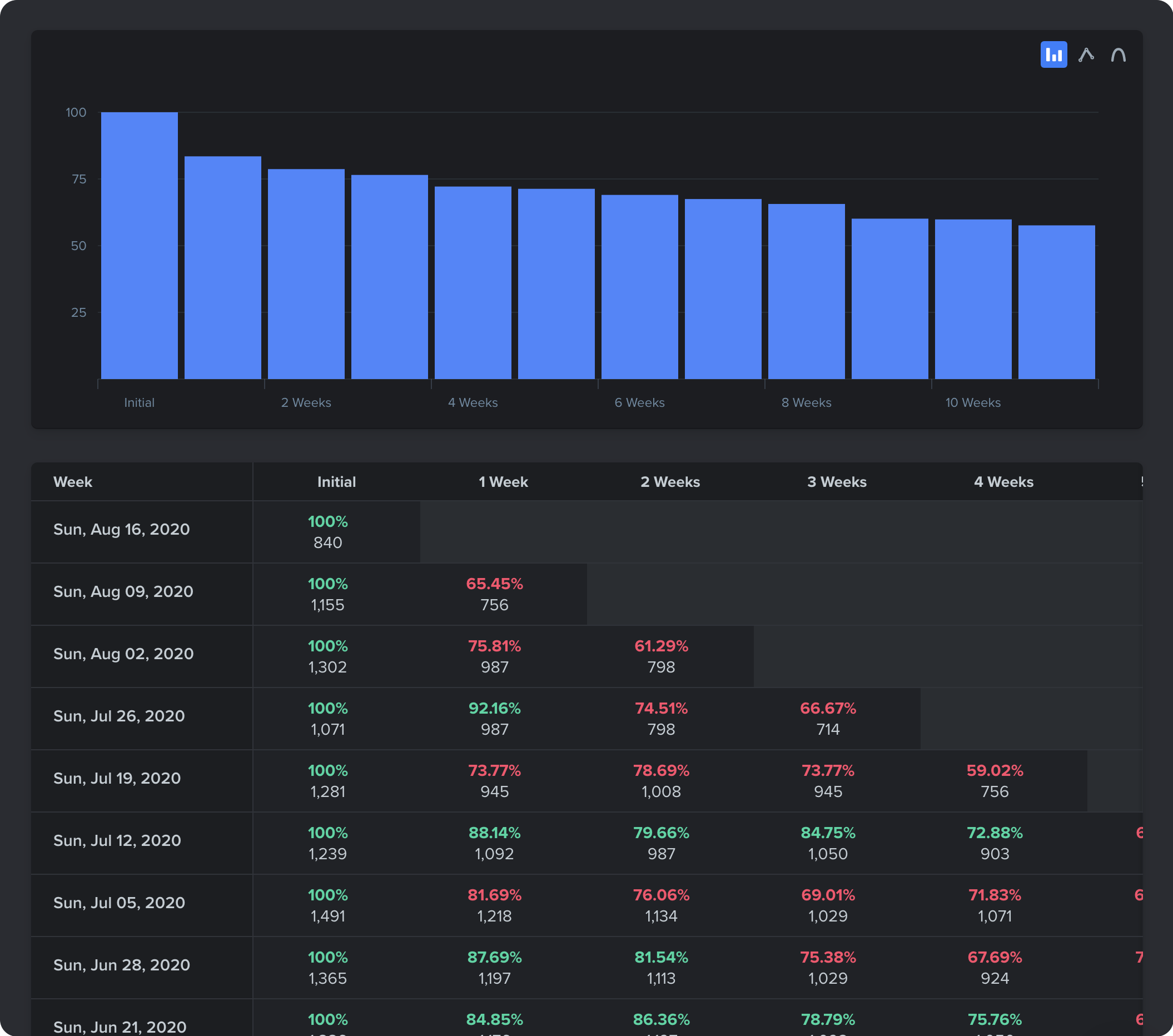Analytics is a broad term that can apply to numerous areas of business and marketing. But at the end of the day, it’s about capturing key data to gain insights into the buyer journey and applying those findings to optimize the process.
This post will break down two particular types of analytics you’ll want to know for creating a better buyer journey pre-and post-purchase — product vs marketing analytics.
What is Product Analytics?
Product analytics, simply put, deals with generating data on the customer experience post-purchase after they’ve bought a product.
It first involves collecting data on how customers engage and interact with a product, user trends, most popular features, least popular features, bounces, friction points, and more.
From there, a data analyst crunches it to identify product strengths and weaknesses so that it can ultimately be refined to enhance the customer experience.
Trends analysis, for example, helps product teams figure out which features are used the most and the least so they can compare current data to past data to see overarching trends that have formed over time.
And attribution analysis helps product teams figure out which touchpoints are having the biggest impact so they’ll know where to place more focus moving forward to maximize revenue.

Product analytics is all about assessing quantifiable product metrics to learn about how customers interact and engage with your product rather than merely “a hunch.”
Generating data on KPIs allows product teams to make better choices, thus enabling them to make continual improvements to keep customers around longer, reduce churn, and potentially unlock opportunities for product upgrades and add-ons for better product management.
What is Marketing Analytics?
As the name implies, marketing analytics software deals with capturing data on marketing and applies to user behavior pre-purchase.
“By applying technology and analytical processes to marketing-related data, businesses can understand what drives consumer actions, refine their marketing campaigns, and optimize their return on investment,” explains the SAS Institute.
Marketing analytics techniques cover a wide range of activities, but some of the most common metrics include:
- Top traffic sources by marketing channel
- Number of visitors
- Page views
- The most visited web pages
- The least visited web pages
- Average time spent on site
- Email marketing performance
- Bounce rate
- Cost per lead
- Cost per acquisition
- Return on marketing investment
Note there are three types of marketing analytics:
- Descriptive analytics tells marketing analysts what happened in the past
- Predictive analytics uses past data to make future predictions
- Prescriptive analytics uses previous data to suggest which marketing efforts will have the biggest impact
And today’s marketing analytics tools are incredibly robust, with many offering end-to-end solutions.
Crazy Egg, for instance, offers heatmaps that visually show a product marketing manager how visitors interact with their site, with a warm-to-cool color spectrum, indicating which sections receive the most engagement.

Source: https://www.crazyegg.com/blog/understanding-using-heatmaps-studies/
One of the other types of marketing analytics many brands can benefit from is funnel tracking which lets a market research analyst visualize the stages someone takes from being a visitor to a paying customer.

This, in turn, lets a marketing analyst see how the entire process plays out and identify potential friction points that need improving.
As more data is accumulated over time, a product marketing expert can refine the customer journey until they get it down to a science and perfect their marketing efforts.
Also Read: Product Strategies In Marketing
Here’s a detailed overview of these and other top marketing analytics tools, including Woopra, Google Analytics, Hotjar, and SEMRush.
How is Product Analytics Different From Marketing Analytics?
Again, product analytics involves generating and analyzing data post-purchase to improve the customer experience, while marketing analytics focuses on generating and analyzing marketing data pre-purchase to optimize marketing activity.
But let’s unpack it further.
Product Analytics Solutions Deal with Product Improvement While Marketing Analytics Deals with Marketing Campaign Improvement
Once a lead has become a customer, product business analytics officially kicks in. At this point, your goal is to create the best possible customer experience, which is done by analyzing the data to improve product features, eliminate problem areas, and identify overarching trends.
In the long run, this is instrumental in increasing product engagement and boosting customer retention.
Marketing analytics, on the other hand, is used in the events leading up to the conversion. They zero in on things like finding the best digital marketing channels, choosing the best content to appeal to different audience segments, and unearthing marketing automation opportunities.
The purpose is to help you drive quality traffic to your site, turn the highest possible percentage of traffic into leads, and ultimately convert the maximum number of leads into customers.
In other words, product analytics is used for product improvement, while marketing analytics is used for marketing improvement. And when used in conjunction with one another, they set the stage for greater customer success.
Product Analytics Focuses on Increasing Product Engagement While Marketing Analytics Focuses on Increasing ROI
While both types of business analytics strive toward increasing revenue, they do it in different ways.
Product analytics increases revenue by figuring out what contributes to product engagement and rinsing and repeating.
If, for instance, customers are highly receptive to one particular feature, you would want to make it a top priority and look for ways to optimize it. However, if the data shows that customers barely use another feature, you would either want to make an overhaul or get rid of it entirely.
Marketing analytics increases revenue by shaving off campaign inefficiencies, eliminating poor-performing marketing channels, and spending more on high-performing channels to increase ROI.
By pinpointing which marketing channels and strategies work best, you can spend each dollar most effectively.
They Use Different Types of Analytics Tools
Because product and marketing analytics measure different stages of the customer journey, different tools are used to extract the data.
Earlier, we touched briefly on a few marketing analytics platforms like Crazy Egg, Woopra, and Google Analytics.
These vary slightly in terms of their specific capabilities, but their overarching purpose is to provide data on which marketing strategies and channels drive the biggest results and what adjustments can be made to optimize your overall marketing efforts.
As for product analytics tools, their purpose is to let you know how customers interact with your product, which features they use the most, how long they spend on your product, and so on.
Some of the most popular product analytics tools, according to G2 are:
- Mixpanel
- Amplitude Analytics
- Pendo
- Heap
- Glassbox
Product Analytics is About Customer Retention While Marketing Analytics is About Customer Acquisition
Zooming out further, a product analytics tool is used to keep customers engaged and ensure a consistently enriching experience. Retention analysis, for example, is a big part of product analytics where product managers examine retention to see where engagement drops off over time.

This allows them to identify trends to discover potential problem areas that lead to unnecessary churn. In turn, they can make adjustments to boost customer engagement and overall loyalty.
Marketing web analytics differs because its purpose is to improve the initial customer acquisition process and encourage more leads to become customers.
By pinpointing the best marketing channels, which landing pages get the most views, bounce rate, and so on, a marketing manager can streamline their strategy to get the most from their time and money.
In other words, marketing analytics help you acquire customers, while product analytics help you retain them.
Marketing Analytics Offer Insights on Demographics While Product Analytics Focus More on User Experience
CustomerLabs makes another great point regarding the differences between product vs marketing analytics with this quote.
“To make it clear, product analytics gives valuable insights into product usage, user experience, and much more. While as in marketing analytics data helps you to create specified marketing campaigns for the users based on demographics such as name, age, and location.”
Mixpanel, for example, is a product analytics platform that helps you understand how your product is used, how many power users you have, and where users drop off.
Google Analytics, on the other hand, is a marketing analytics platform that supplies a wealth of demographic data so you can better understand who your audience is and adjust your campaign to reach them more effectively.
By tapping into both types of analytics, you’re able to get a bird’s-eye view of who your audience is (with marketing analytics) and how to enhance the customer experience (with product analytics) for the ultimate one-two punch.
Closing Thoughts
The core difference between product vs marketing analytics is that product analytics focuses on optimizing the customer experience post-purchase.
Marketing analytics, however, deals with everything pre-purchase and enhancing a marketing campaign to generate high-quality leads and increase conversions.
Understanding how each type of analytics works is important as it helps you gather data at all stages so you can convert more leads to customers and retain more customers for longer.




